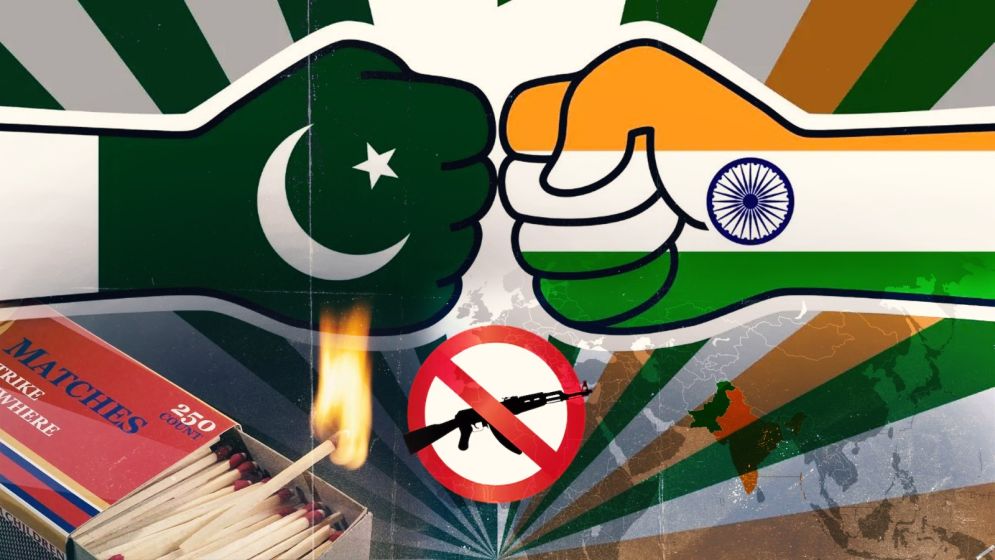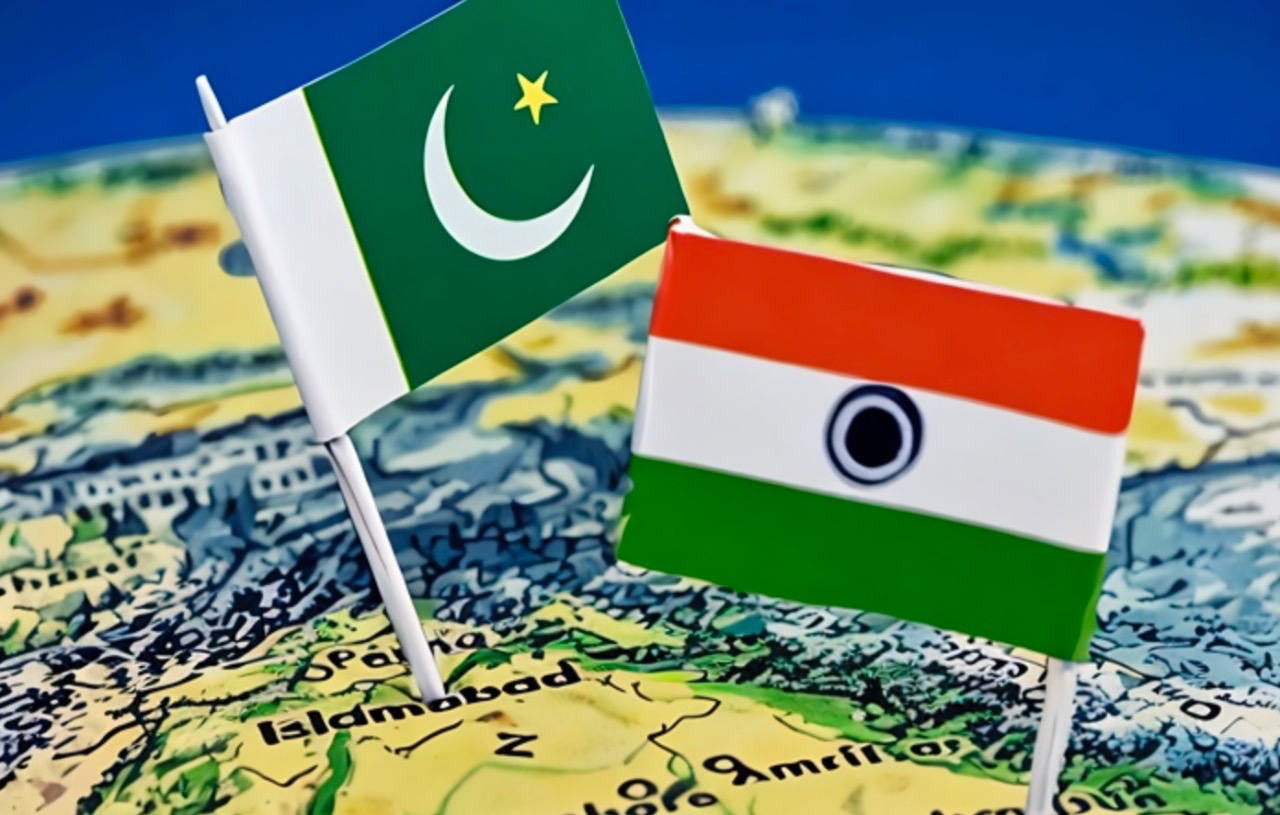In an apparently changing world order, the India-Pakistan ceasefire is a band-aid over a nuclear wound

We’ve seen the unfolding of this scenario before–an attack in Kashmir, Indian lives lost, cross-border rhetoric turning venomous, and then the familiar rhythm of military escalation followed by a hastily brokered truce.
And yes, that cycle repeated itself yet again, culminating in a ceasefire announced on May 10, 2025.
But make no mistake: this was no routine crisis. What unfolded over the past three weeks marks a sharp, dangerous evolution in the decades-old India-Pakistan rivalry.
This was an exchange of missiles, of drones and precision strikes on sovereign military targets deep inside both countries. And for the first time, we saw two nuclear-armed states wielding advanced battlefield technologies in ways that pushed South Asia to the edge of catastrophe.
The arc of India-Pakistan tensions bend and recoil over decades– and as an armchair analyst from Dhaka, I can say with conviction: the old playbook of containment is cracking.
The international norms that once restrained brinkmanship have withered. The external powers that once stepped in–chiefly the United States–have receded into distracted disinterest.
And the region’s two leading powers, armed with deadlier tools and more brittle egos, are now operating with less oversight and fewer off-ramps.
Within days of the deadly terrorist attack in Pahelgam, India’s “Operation Sindoor” was underway–a name loaded with religious symbolism, evoking the red powder worn by Hindu wives and, more darkly, the widows left behind by terror.
Pakistan’s response came swiftly: “Bunyan-un-Marsoos,” pulled from the Quran, a signal of religious resolve and Islamic unity.
These were essentially identity wars, wrapped in symbolism, fueled by ideology. On one side, Narendra Modi’s muscular Hindu nationalism, now a fixture of Indian politics. On the other, Pakistan’s military leadership, increasingly forthright in its invocation of the two-nation theory–the very idea that partitioned the subcontinent in 1947 and continues to cast its divisive shadow today.
This time, the crisis went beyond rhetoric. Both nations launched strikes across the Line of Control. Indian drones disabled Pakistani radar systems in Punjab. Pakistani cruise missiles targeted an Indian supply depot in Rajasthan.
Civilian panic spread. Global markets shivered. And while the fighting didn’t escalate into all-out war, it came closer than most in Washington or Brussels seem to realize.

How different was the
crisis?
Here’s the problem: unlike past crises–in Kargil in 1999, Mumbai in 2008, or Pulwama in 2019–there was no clear diplomatic anchor.
The U.S., once the default mediator, played a marginal role this time. China's influence was largely silent. And regional mechanisms, like SAARC or BIMSTEC, were nowhere to be seen.
The traditional shock absorbers are gone. What we now have is an increasingly digital, increasingly ideologized arms race–more unpredictable and less containable than ever.
Bangladesh, nestled between these two giants, watches nervously. Not just because we are geographically wedged between them, but because every crisis between India and Pakistan destabilizes the entire region–politically, economically, and psychologically.
The lesson from this latest flare-up was clear: the next trigger could come sooner, burn hotter, and spiral faster. South Asia cannot rely on the assumption that nuclear weapons will always prevent full-scale war.
Nor can we assume that two nations ruled by populist strongmen, consumed by religious identity politics, will always act with strategic restraint.
We need a new framework. One that doesn’t rely on Washington’s distracted attention. One that recognizes that technology has outpaced diplomacy. And one that acknowledges the existential danger of two states, drunk on their own histories, careening toward the edge.
In 1999, it was President Bill Clinton who personally leaned on Pakistan to withdraw from Kargil, effectively ending that limited war. In 2001 and again in 2008, after attacks linked to Pakistan-based terror groups, it was Washington’s shuttle diplomacy–led by people like Richard Armitage–that kept the subcontinent from unraveling.
Even as recently as 2019, during the Balakot-Pulwama crisis, then-Secretary of State Mike Pompeo worked behind the scenes to deescalate the situation.
“I do not think the world properly knows just how close the India-Pakistan rivalry came to spilling over into a nuclear conflagration,” he later wrote. He wasn’t exaggerating.
But that era of high-touch American diplomacy in South Asia is over.
The unraveling began with the U.S. drawdown in Afghanistan and the end of its war on terror. It accelerated with growing domestic fatigue in Washington over “endless conflicts.”
But under President Donald Trump’s second term, it has calcified into policy neglect. As of now, the United States doesn’t even have ambassadors in New Delhi or Islamabad.
There’s no confirmed Assistant Secretary of State for South and Central Asian Affairs. The infrastructure of diplomacy has been allowed to decay.
Sure, Trump claimed that the May 10 ceasefire was the product of “a long night of talks” led by Washington.
But both India and Pakistan notably downplayed any such role, emphasizing instead the bilateral nature of negotiations. It’s hard to miss the message: they’re moving on, with or without America.
This should terrify anyone who understands the stakes. South Asia is home to two nuclear-armed adversaries with a long history of war, mistrust, and mutual provocation.
It is a region where ideology–religious nationalism in India, military-Islamic identity politics in Pakistan–is increasingly central to statecraft.
And now, it’s a region where rapid advances in drone warfare, missile systems, and AI-powered surveillance are pushing both sides toward faster, more dangerous escalation.
Absent the United States, no other power is credibly positioned to intervene.

Why is waning US
influence not a good thing?
China, which has played the self-appointed peacemaker in other global conflicts, is an implausible mediator here. Its strategic alliance with Pakistan and recent military standoffs with India strip it of any pretense of neutrality.
Iran and Saudi Arabia reportedly made overtures during the crisis, but neither has the leverage or regional legitimacy to play a serious role. Europe, distracted and divided, barely registers.
Of course, the absence of external mediation isn’t inherently a tragedy. For much of the Cold War, Western involvement– particularly Washington’s– didn’t stabilize South Asia so much as entrench its imbalances.
Billions in American aid to Pakistan propped up its military while reinforcing Delhi’s suspicions. But history has also shown that in moments of near-collapse, external pressure– especially from the U.S.-- could pull the region back from the brink.
That stabilizing influence is now gone, and it has disappeared at a moment when the international norms that once governed conflict are themselves in free fall.
Since 9/11, and with particular acceleration in the past decade, we’ve witnessed the erosion of once-sacrosanct principles of sovereignty and proportionality.
America’s own post-9/11 conduct– from extrajudicial drone strikes to the normalization of preemptive war–helped unravel the very legal and moral frameworks it once championed.
Today, violations of international law in places like Gaza, Lebanon, and Syria provoke outrage, but rarely consequences.
In this permissive environment, India and Pakistan no longer see restraint as either necessary or rewarded. They look around and see a world where might not only makes right– it makes headlines.
Where violations of sovereignty are now common, and civilian infrastructure has become a legitimate target. Why should South Asia be any different?
And this is what truly makes the April-May crisis so dangerous. This wasn’t just a continuation of the Kashmir conflict. This was a next-generation confrontation– a multi-domain war that pulled in not just soldiers and missiles, but drones, satellites, hackers, and propaganda machines.
This time, Pakistani J-10 fighters– Chinese-built, export-ready– reportedly downed French-made Indian Rafales. The battlefield was an arena for proxy competition between Beijing and the West, a microcosm of the broader global arms race.
More alarmingly, both sides deployed loitering munitions– drone systems that seek and destroy radar installations–in a clear escalation of cross-border strike capabilities.
These are tactical precision tools, the kind that shorten decision-making time and increase the risk of miscalculation.
And then there was cyberspace. In an alarming first, Pakistani hacker groups claiming affiliation with state-linked cyber units penetrated Indian military institutions, allegedly exposing sensitive personnel data.
India, for its part, is rumored to have disabled Pakistani military communications in the Punjab region using electromagnetic jamming. None of these moves required boots on the ground– but each carried enormous strategic weight.
The line between peacetime competition and wartime escalation has blurred, perhaps irreversibly. The conflict is no longer just about Kashmir, just about territory. It is now also about digital supremacy, technological deterrence, and symbolic dominance in a region abandoned by its traditional referee.
So, South Asia has entered a new phase–one where crises are faster, bloodier, and harder to contain. And with Washington distracted, Beijing compromised, and no global system of accountability left intact, there’s no grown-up left in the room.
This is no longer a regional problem. It’s a global warning.
–
Md Sazzad Amin is an entrepreneur and an armchair political analyst

